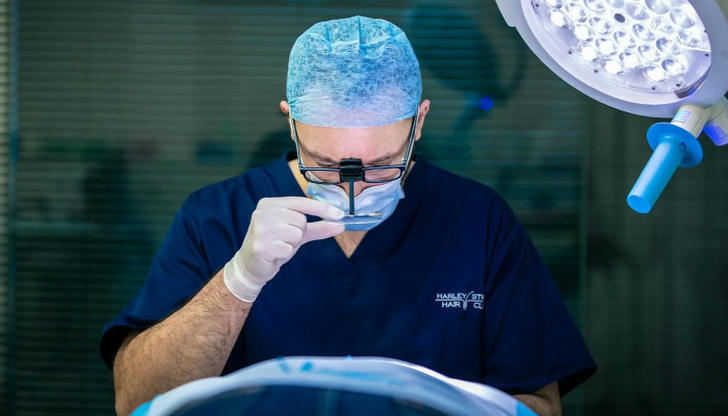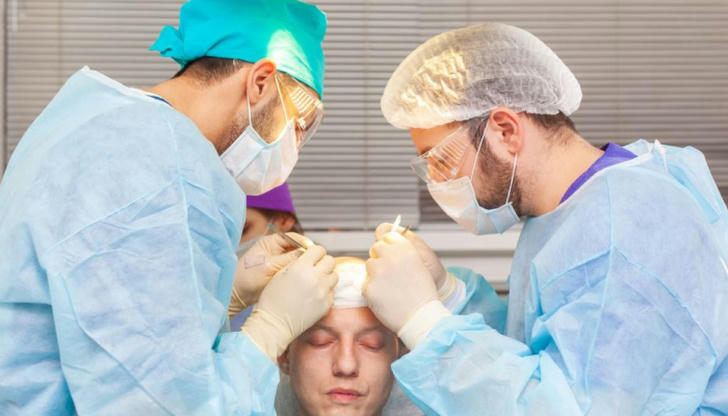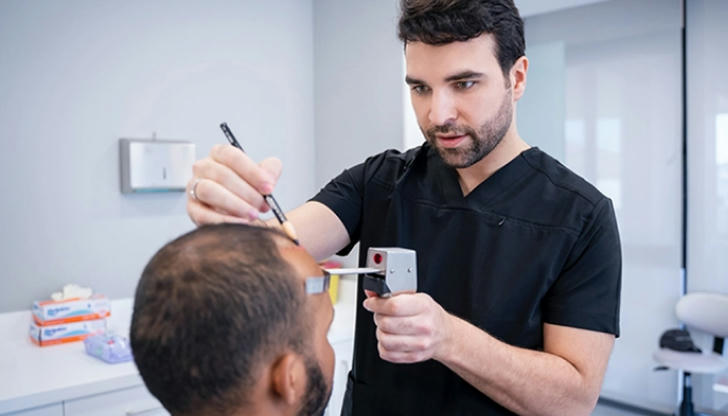The Modern Development of Hair Transplants: Innovations, Techniques, and Future Prospects

Hair loss, especially male pattern baldness, is a common issue that affects millions of people worldwide. For many, hair loss not only has aesthetic implications but also psychological effects, influencing self-esteem and social interactions. While hair loss treatments like medications and topical solutions exist, hair transplantation has emerged as one of the most effective, permanent solutions. Over the past few decades, hair transplants have undergone remarkable transformations, with advancements in techniques, technology, and overall effectiveness. This essay explores the modern development of hair transplant procedures, highlighting the innovations that have made them more efficient, natural-looking, and accessible. It also discusses the future prospects of hair restoration, examining the role of new technologies and approaches in advancing this field.
The History of Hair Transplants

Hair transplantation is not a new concept. The first documented attempts to transplant hair date back to the early 19th century, but it was not until the 1950s that the procedure began to take shape as a modern medical treatment. Dr. Norman Orentreich, a dermatologist in New York, is widely regarded as the pioneer of hair transplant surgery. In 1952, Dr. Orentreich performed the first successful hair transplant using a technique called punch grafting, which involved transplanting small round sections of scalp skin, each containing a few hair follicles, from one part of the head to the balding area. This technique laid the groundwork for the modern methods used today, but it was far from perfect, leaving visible scarring and unnatural results. In the 1980s and 1990s, the technique evolved with the introduction of micrografting and minigrafting, which involved using smaller grafts to create a more natural hairline. The development of follicular unit transplantation (FUT) and follicular unit extraction (FUE) in the late 1990s and early 2000s further advanced the field, leading to the highly refined and effective methods that dominate today’s hair restoration industry.
Innovative Techniques in Modern Hair Transplants
Hair transplant procedures have significantly improved over the past few decades, largely due to advancements in techniques and technology. The two most common methods used today are Follicular Unit Transplantation (FUT) and Follicular Unit Extraction (FUE). Each of these techniques has its strengths, and the choice between them depends on various factors, including the patient’s preferences and the surgeon’s expertise. Follicular Unit Transplantation (FUT) FUT, also known as the strip method, involves removing a strip of tissue from the back or side of the patient’s scalp, where hair is resistant to the effects of androgenic alopecia (male or female pattern baldness). The strip is then divided into smaller grafts, each containing several hair follicles. These grafts are then transplanted into the thinning or balding areas of the scalp. While the FUT method provides excellent results in terms of hair density and naturalness, it comes with the disadvantage of a linear scar at the donor site, which can be noticeable if the patient wears short hairstyles. However, the FUT method is still widely used in cases where a large number of grafts are needed, as it allows the surgeon to harvest a larger number of follicles in a single session. Follicular Unit Extraction (FUE) FUE is a more modern and minimally invasive technique in which individual hair follicles are extracted directly from the donor area using a small punch tool. The follicles are then transplanted into the recipient area one by one. Unlike FUT, FUE does not require the removal of a strip of tissue, which means there is no linear scarring, and the recovery time is generally faster. FUE offers the advantage of being less invasive and leaving no visible scars. It is especially popular among patients who prefer shorter hairstyles or who are concerned about scarring. However, FUE can be more time-consuming than FUT, as it requires extracting individual follicles, which can take several hours or even multiple sessions. Robotic Hair Transplantation One of the most exciting advancements in hair transplantation is the introduction of robotic-assisted surgery. The ARTAS System, for example, is an FDA-approved robotic system designed to assist in the FUE procedure. The robot uses advanced algorithms and high-definition cameras to identify healthy hair follicles and extract them with precision. This technology enhances the accuracy of the extraction process, reduces the risk of human error, and ensures consistent results. Robotic systems like ARTAS offer several benefits, including reduced procedure times, minimal scarring, and a more efficient graft placement. The robot also provides an added layer of precision, which can lead to a more natural-looking hairline. However, the cost of robotic hair transplant systems can be high, making them less accessible to some patients. Platelet-Rich Plasma (PRP) Therapy In addition to surgical procedures, Platelet-Rich Plasma (PRP) Therapy has become a popular non-surgical treatment to promote hair growth and enhance the results of hair transplant surgeries. PRP involves drawing a small amount of the patient’s blood, processing it to concentrate the platelets, and then injecting the platelet-rich plasma into the scalp. The growth factors in the PRP stimulate the hair follicles and promote hair regrowth. While PRP does not replace the need for a transplant, it can be used in conjunction with hair transplant surgery to improve the results, speed up the recovery process, and enhance the overall quality of hair growth.
Factors Contributing to the Modern Success of Hair Transplants

Several factors have contributed to the modern success and growing popularity of hair transplant procedures:
- Advancements in Technology The incorporation of cutting-edge technology into hair transplant procedures has significantly improved both the results and patient satisfaction. 3D imaging and digital mapping allow surgeons to create more precise treatment plans, taking into account the patient's unique scalp anatomy and hair characteristics. These technologies help ensure the most natural-looking results by carefully planning the hairline and transplant sites. The use of robot-assisted technology has also improved the precision of follicle extraction, reducing the risk of damage to the hair follicles and ensuring that they are transplanted in the correct direction to mimic natural hair growth.
- Improved Aesthetic Results Modern hair transplant techniques are highly effective at producing natural-looking results. Thanks to the refinement of micrografting and follicular unit techniques, each transplanted follicle is placed in its natural groupings, mimicking the appearance of natural hair growth. This technique ensures that the final result blends seamlessly with the surrounding hair, providing a natural look without noticeable lumps or irregularities.
- Reduced Recovery Time The evolution of hair transplant techniques has made the recovery process significantly faster and less painful. With minimally invasive methods like FUE and robotic-assisted surgery, patients can expect shorter recovery times, less swelling, and fewer complications. Most patients can return to normal activities within a few days, although it may take several months for the full results to be visible as the newly transplanted hair grows.
- Greater Accessibility As the demand for hair transplant procedures continues to rise, the cost of treatments has gradually decreased, making them more accessible to a wider range of patients. The increased competition among hair transplant clinics has also contributed to lower prices, as many clinics strive to offer more affordable options to attract customers. Additionally, the rise of medical tourism has enabled patients to seek high-quality, affordable hair transplants abroad, particularly in countries like Turkey, India, and Thailand.
The Future of Hair Transplants

The future of hair transplant technology and procedures looks promising, with several exciting developments on the horizon.
- Stem Cell Research One of the most groundbreaking areas of research in hair restoration is stem cell therapy. Scientists are exploring ways to use stem cells to regenerate hair follicles and promote natural hair growth. While still in the early stages, stem cell-based treatments hold the potential to revolutionize hair restoration by offering a non-surgical, long-term solution to hair loss.
- Hair Cloning Another exciting possibility is hair cloning—a process that involves creating new hair follicles from a patient’s existing ones. By cloning hair follicles in the lab, researchers hope to be able to grow an unlimited supply of hair that can be used for transplants. Although this technology is still in the experimental phase, it could provide a permanent, non-invasive solution for hair loss in the future.
- Better Post-Procedure Solutions As technology advances, new treatments and products will likely emerge to enhance the post-surgical recovery process and further improve the results of hair transplants. These might include advanced topical treatments, laser therapies, and other forms of regenerative medicine that speed up hair follicle recovery and reduce scarring.
Conclusion
Hair transplantation has come a long way since its inception, and modern advancements in technique, technology, and materials have made it a highly effective solution for hair loss. Whether through traditional methods like FUT and FUE or the use of robotic systems and PRP therapy, hair transplants are more accessible, affordable, and effective than ever before. As the field continues to evolve with innovations like stem cell research and hair cloning, the future of hair restoration looks even more promising. With ongoing advancements, it’s clear that hair transplants will remain a leading solution for individuals seeking to restore their hair and, by extension, their confidence.
